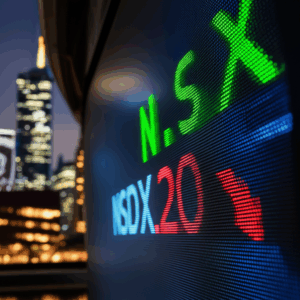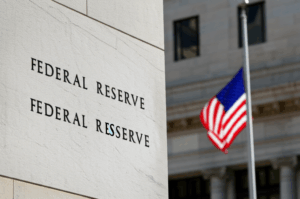EUR/USD Corrective Pullback Deepens Post-Fed: Eyes on 1.1410 Support
The foreign exchange market is a dynamic arena, constantly recalibrating based on a confluence of economic data, geopolitical shifts, and, crucially, central bank policy. In recent sessions, the widely-watched EUR/USD currency pair has found itself in the throes of a notable “corrective pullback,” an industry term indicating a temporary reversal against a prevailing trend. This downward movement has intensified significantly in the aftermath of the latest Federal Reserve (Fed) policy announcements, pushing the pair closer to a critical technical support level at 1.1410. For young professionals and enthusiasts keen on understanding the intricate dance of global currencies, this presents a compelling case study in the immediate and far-reaching effects of monetary policy divergence.
At the heart of the EUR/USD’s recent decline lies the updated stance from the U.S. Federal Reserve. Following its most recent meeting, the Fed signaled a more aggressive pivot towards addressing inflationary pressures, hinting at a potentially faster pace of interest rate hikes and a quicker tapering of its asset purchase program than previously anticipated. This hawkish shift immediately bolstered the U.S. Dollar (USD), making it more attractive to investors seeking higher yields. When a central bank tightens its monetary policy, it typically strengthens its domestic currency as higher interest rates increase the return on holding that currency, drawing in capital from abroad. Conversely, a more dovish or comparatively less aggressive stance from a counterpart central bank, such as the European Central Bank (ECB), amplifies this effect. While the ECB has acknowledged inflationary pressures, it has largely maintained a more cautious approach, emphasizing the temporary nature of current price surges and indicating a slower path to policy normalization compared to its transatlantic peer. This widening gap in monetary policy outlooks between Washington and Frankfurt is a primary catalyst for the Euro’s weakening against the Dollar.
Beyond the immediate central bank narrative, broader economic fundamentals are also playing a role. The U.S. economy continues to demonstrate robust job growth and resilient consumer spending, painting a picture of underlying strength despite inflationary headwinds. This contrasts with certain segments of the Eurozone, which face ongoing challenges including supply chain disruptions, elevated energy costs, and varying degrees of post-pandemic recovery across member states. Such discrepancies in economic performance tend to translate into currency movements, with capital flowing towards regions perceived as offering stronger growth prospects and, consequently, more stable investment environments. Furthermore, global risk sentiment can also influence the EUR/USD. In periods of heightened uncertainty, the U.S. Dollar often benefits from its status as a premier safe-haven currency, attracting flows away from perceived riskier assets, including the Euro. While the current environment isn’t marked by extreme panic, persistent geopolitical tensions and the lingering shadow of the pandemic contribute to an underlying demand for dollar liquidity.
From a technical analysis perspective, the 1.1410 level has emerged as a crucial point of interest for traders and analysts. A “support level” is a price point at which buying interest is expected to be strong enough to prevent the price from falling further, at least temporarily. For EUR/USD, 1.1410 represents a historical pivot point, having acted as both resistance and support in previous trading cycles. Its significance now lies in its potential to either stem the current corrective pullback or, if broken decisively, signal a deeper decline. Should the pair find robust support at 1.1410, it could pave the way for a modest bounce as buyers step in, perhaps seeing the current depreciation as overdone. However, a breach below this level could trigger further selling pressure, potentially opening the door to the next psychological and technical support levels, such as 1.1350 or even 1.1300. Market participants will be closely watching price action around this level, along with upcoming economic data releases from both the U.S. and Eurozone, to gauge the momentum and determine the next directional bias for the currency pair.
The deepening corrective pullback in EUR/USD post-Fed highlights the immediate and tangible impact of central bank communications on global financial markets. As the Federal Reserve signals a more aggressive path to monetary tightening, the U.S. Dollar gains strength relative to the Euro, whose central bank maintains a more cautious stance. This fundamental divergence, coupled with varying economic performances, continues to drive the pair lower, pushing it towards the critical 1.1410 support level. The coming days will be pivotal, with market participants scrutinizing every piece of economic data and every central bank utterance for clues on whether 1.1410 will hold, offering a potential reprieve for the Euro, or if its breach will signal a further extension of the Dollar’s ascendancy. For anyone navigating the complexities of the modern financial landscape, observing this ongoing tug-of-war between two of the world’s major currencies offers invaluable insight into the forces shaping the global economy.





